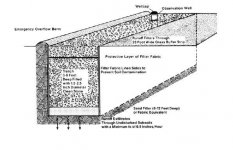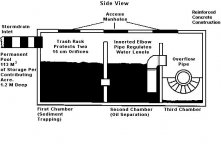I looked Closer at the one you posted, that Filter is doing a great job. Do you see all the debris thats captured?
Why even if there is and Outfall do you want to go around what was Designed?
Why even if there is and Outfall do you want to go around what was Designed?
Wanted to share info, contrary to what some may think/believe, understanding/sharing the function of these and similar on property systems is why I am posting my findings.
Spoke with a Howard County Maryland Project Construction Inspector today in person, at a different location other than photoed directly below, as to what the below photoed installation maybe, he mentioned that he does not cover that part of the county but could get the info (which he said he would do), from my description he said it sounded like an infiltration trench. After reading Howard County's website I found this document.
View attachment 22935
I also questioning AHJ on what the installation is in the gas station video, I left a message with Montgomery County asking for a return call.



